‘Matisse, Derain and their Friends: The Parisian Avant-garde 1904–1908’ is the swansong of the outgoing director of the Kunstmuseum Basel, Josef Helfenstein. It is the last in a sequence of exhibitions to explore the roots – and the myths – of modernism, and anchor it firmly in its social context. The prompt was the deposit of seven major Fauve paintings on permanent loan in 2020 by a private foundation; several of these were previously on loan to the Courtauld Gallery in London.
To this small core has been added some 160 paintings, sculptures, ceramics, drawings and prints. To see so many unfamiliar works, drawn from private collections as well as institutions large and small, is a revelation. Not least among them are those by, and of, women artists and dealers whose significance in this narrative has long been obscured.
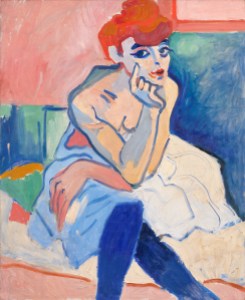
Femme en chemise (1906), André Derain. Statens Museum for Kunst, Copenhagen
Fauvism was the first avant-garde movement or ‘ism’ of the 20th century. It was also one of the shortest lived. Even so, the radical experiments of the artists drawn into its ambit were profound and long-lasting. Theirs was no intellectual, manifesto-driven agenda: the term Les Fauves (‘the Wild Beasts’) was meant by the critic Louis Vauxcelles in a review of the Salon d’Automne of 1905 as an insult – but gleefully accepted as a badge of pride by the artists themselves. The movement is perhaps best described as a coalescing of ideas among artists exploring the ramifications of the Post- and neo- Impressionism of Van Gogh, Cézanne, Gauguin and Seurat. The result of their meeting, as this exhibition demonstrates so vividly, was an explosion of pure colour.
We see the first flush of radicalism in Nu aux souliers roses (1900), in which Matisse transformed the reality of the dull grey studio walls into thick bands of vivid colour, the nude’s form highlighted in orange and ochre. That liberation of colour from the task of representating reality is fully realised when Vlaminck and Derain worked together along the banks of the Seine, and Derain and Matisse joined ranks in Collioure to be dazzled by the intensity of Mediterranean light. After the Salon scandal of 1905, kindred spirits from Le Havre – Braque, Dufy and Friesz – joined their various expeditions. As to why Matisse painted La plage rouge in 1905, the artist remarked that he had noticed that he had painted the sand red, ‘So the next day I tried yellow. But that didn’t work at all.’
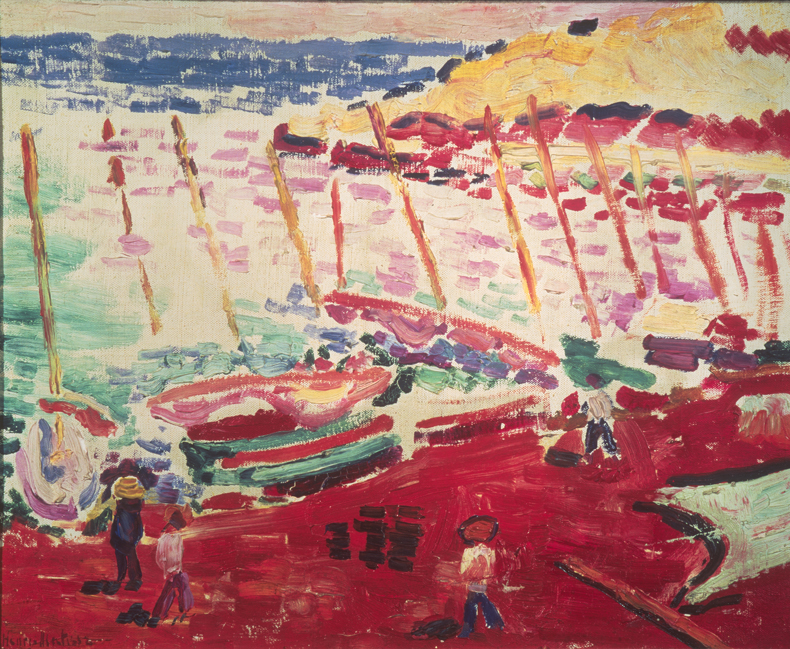
La plage rouge (1905), Henri Matisse. Private collection
Colours were chosen for their expressive value, just as brushwork was visible and immediate – sometimes simply dabs of pure colour, unmixed, and even painted directly from the tube on unprimed canvas. Shadows had long been abolished, as had the conventions of pictorial space.
Of the women artists in the spotlight here, the least known – and very possibly the most remarkable – is Émilie Charmy. We first come across her – painting the Corsica coast more boldly than her partner Charles Camoin in 1910 – and depicting Berthe Weill, gallerist to the avant-garde (including Picasso) and an early champion of women artists. Yet most astonishing of all is a self-portrait of 1906 where Charmy represents herself reclining on a couch, flushed and with one breast bared. It is an audacious image and not one to be expected from the granddaughter of a bishop.
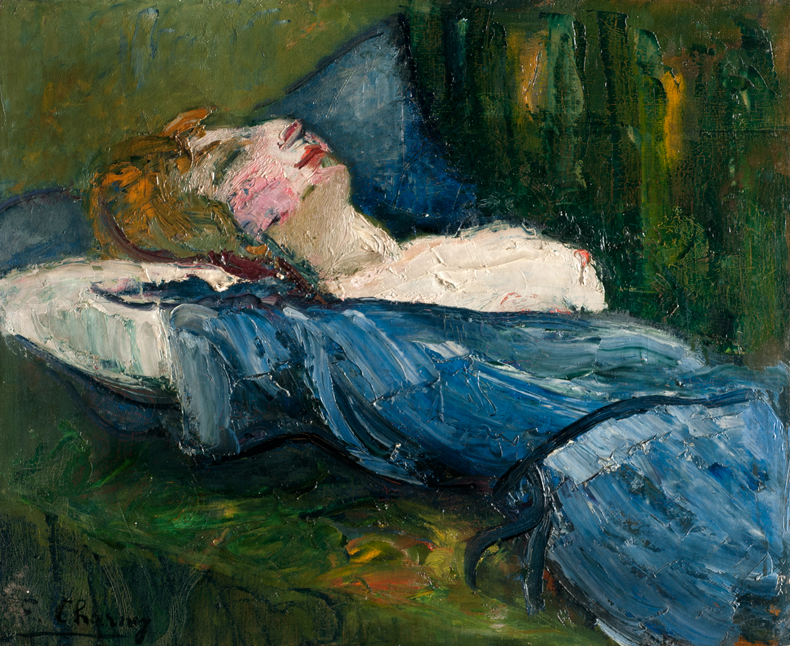
Self-Portrait (1906), Émilie Charmy. Galerie Bernard Bouche, Paris
Sex is never far away in the work of the Fauves, either geographically or pictorially. The artist quarters of Montmartre and Montparnasse were infamous for their nightlife and sex workers. There are tarts galore – strikingly portrayed in Derain’s La Femme en chemise (1906) – and sexual encounters, as in Le Hussard (1907) by Kees van Dongen, who also chose to depict the drag queen Claude Modjesko (known as the ‘Black Patti’) singing at full throttle as a sopraniste.
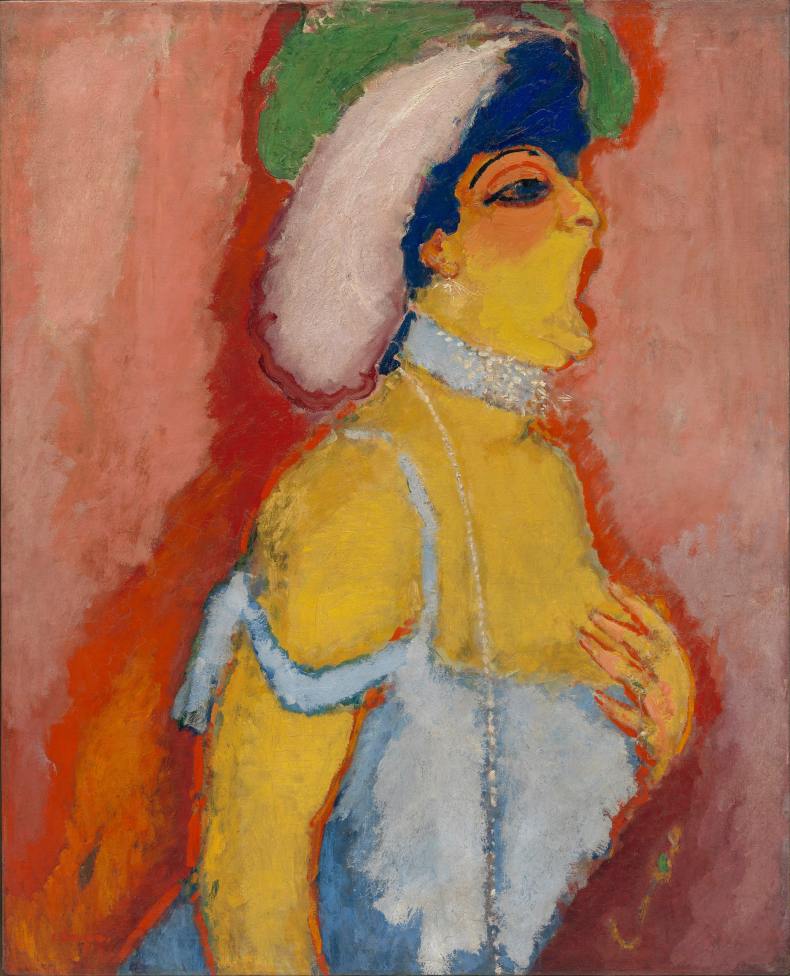
Modjesko, Soprano Singer (1908), André Derain. Museum of Modern Art, New York
It can be no coincidence that the Fauves also favoured still life, the lowest genre within the academic hierarchy. So schematic is a Dufy flowerpiece that the blooms and foliage are unrecognisable. The egalitarian, ‘outsider’ eye of these artists drew not only from postcards and posters of tourist playgrounds, but also from art naïf (Le Douanier Rousseau was a hero) and sources seen as primitive or ‘other’. Vlaminck is believed to have been the first modern European artist to have acquired an African mask, in 1905, and his Nu rouge of that year – not exhibited since 1930 – appears to have drawn inspiration from it. Cultural appropriation abounds – the rhythmic tour-de-force that is Derain’s monumental La Danse (1906) being a case in point.
The sole disappointment of this expansive and revisionist exhibition is that the international context of Fauvism is represented by no more than a postscript through the Blaue Reiter artists Kandinsky, Gabriele Münter, Alexej Jawlensky and Marianne Werefkin. As this roster of names suggest, artists knew no boundaries in the first decade of the 20th century.
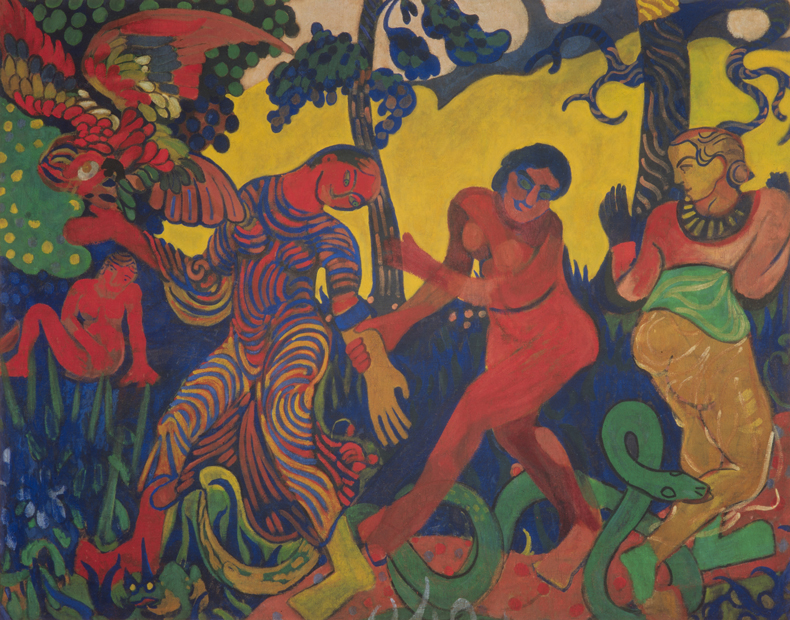
La Danse (1906), André Derain. Private collection
‘Matisse, Derain and their Friends: The Parisian Avant-Garde, 1904–1908’ is at the Kunstmuseum Basel until 21 January 2024.
Unlimited access from just $16 every 3 months
Subscribe to get unlimited and exclusive access to the top art stories, interviews and exhibition reviews.


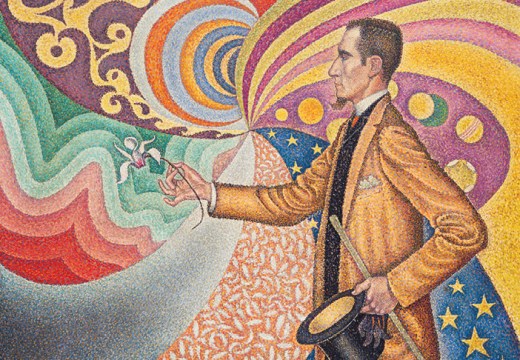
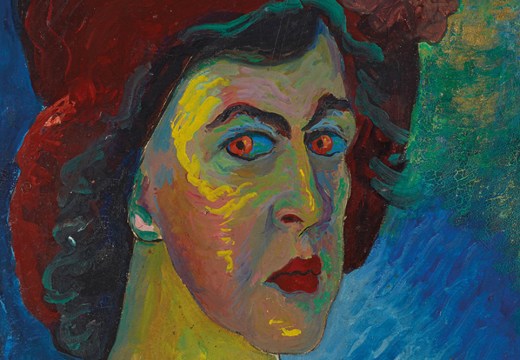
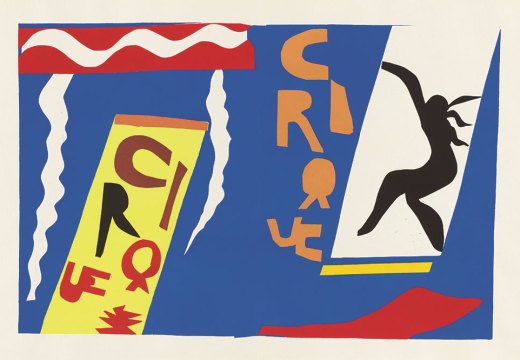









![Masterpiece [Re]discovery 2022. Photo: Ben Fisher Photography, courtesy of Masterpiece London](http://www.apollo-magazine.com/wp-content/uploads/2022/07/MPL2022_4263.jpg)
Has arts punditry become a perk for politicos?